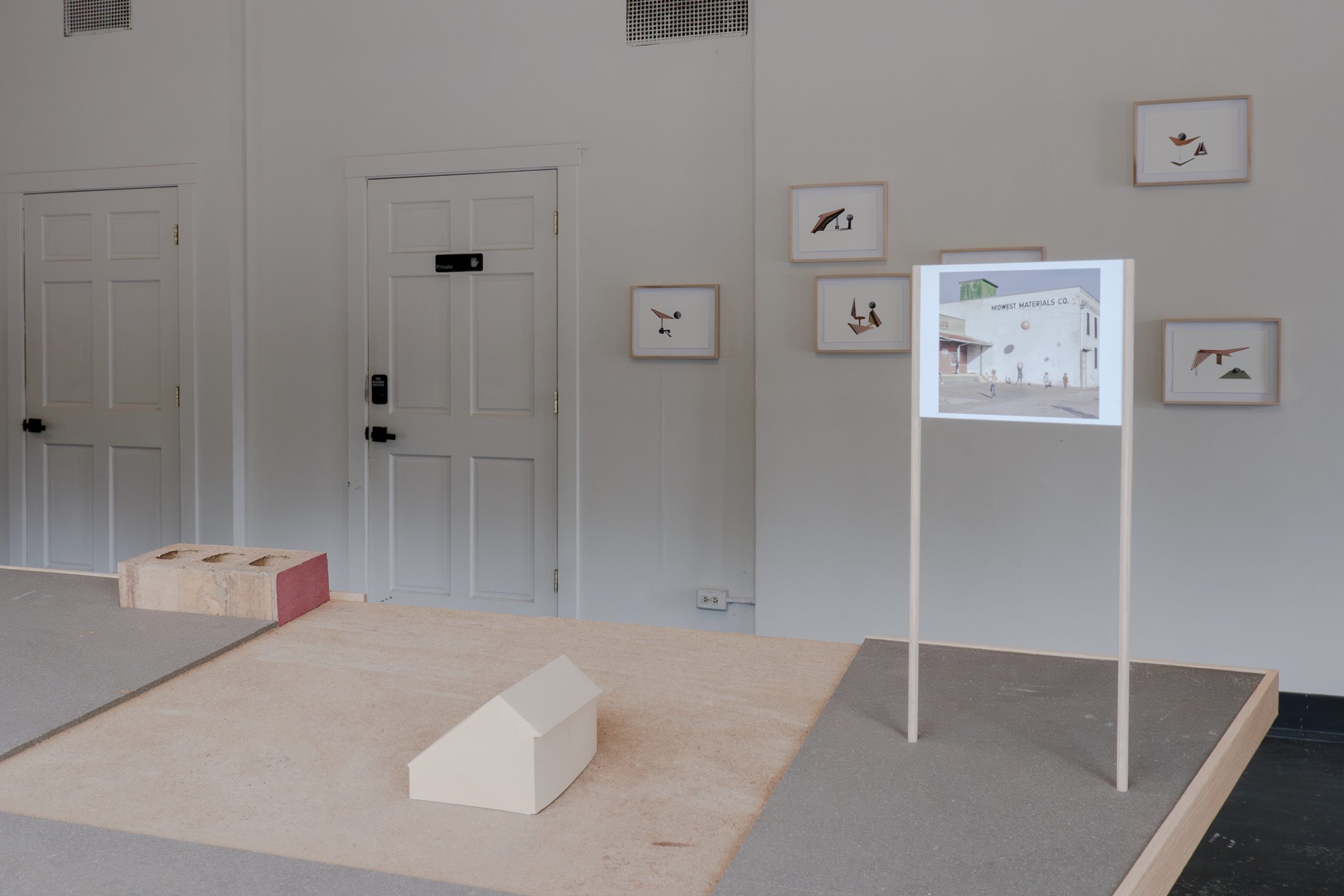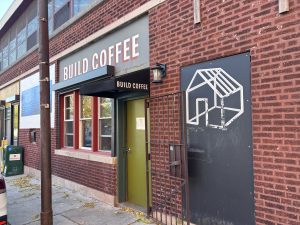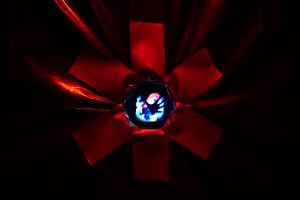If you have spent much time in the American Midwest, chances are you’ve become intimate, whether you intended to or not, with its shapes and colors. In a city like Chicago, you see and know all too well the flat, broad sides of old warehouses-turned-loft apartments; the way a gray potholed street glints up into your eyes, reflecting the hot summer sun. Outside the urban sprawl, there are lines that run straight or curve softly: an interstate on-ramp, edges of fields, the long steel gleam of railroads. Along with colloquialisms like “ope,” infinite shades of blue sky, green prairie, brown crops, and gray acres of concrete that have been poured between you and the nearest body of water, these shapes make up some amorphous entity of this place.
The tactile nature of a place becomes something we know well, something that sinks its teeth into our subconscious. But what that place is remains difficult to define. The Midwest, for example, is a region covering 12 states with both urban and rural areas in which ideas of culture, identity, and values are often disparate. What are we talking about, therefore, when we talk about the Midwest or call something ‘Midwestern?’ It’s moments like this, of ambiguity between a place and its given or assumed identity, that artists Sheldon Till-Campbell and Zulkhairi Zulkiflee are drawn to investigate. For Till-Campbell (born 1993, Kansas City), this is the concept of the American Midwest. For Zulkiflee (born 1991, Singapore), it’s the intricacies of Malay identity and its ties to structure and location.
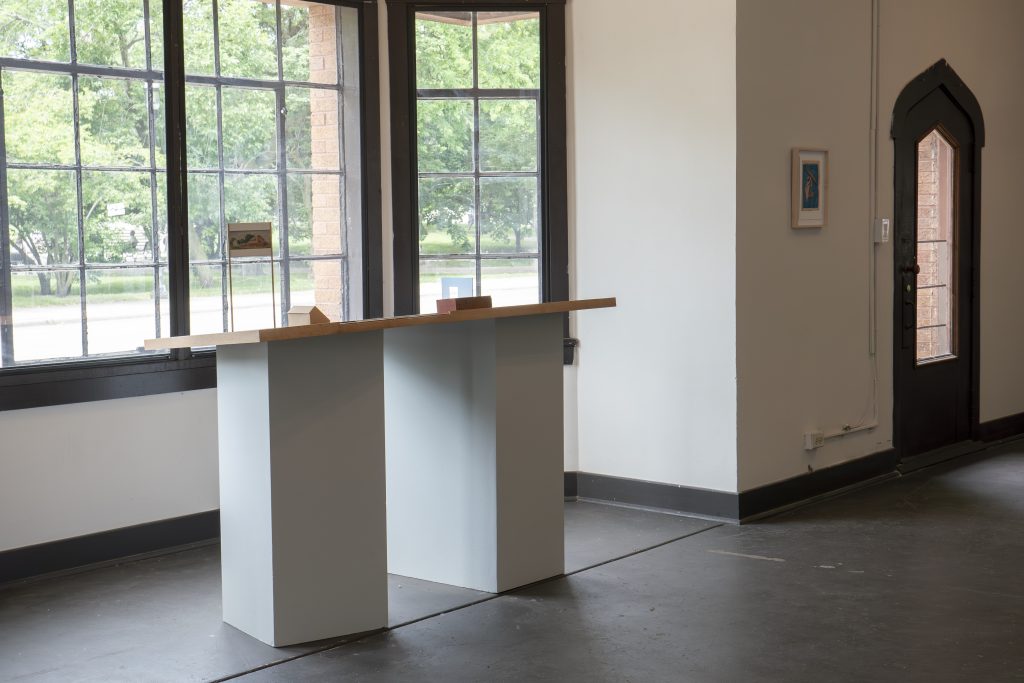
In their joint exhibition certain places at Comfort Station, both artists question the ties drawn between a place and its designated identity while exploring how constructed frameworks of place might be upended and reshaped; their concepts unraveled and reconsidered. The works themselves come together as an exchange, or, to borrow a term from the exhibition’s statement, a mutual “negotiation” with current identities related to place. The six works in the show, three by each artist, alternate across the space in the way that a conversation unfolds between two people. Together, the works form a dialogue through which possibilities for how to question place, structure, and identity are proposed.
Each artists’ use of pieces of a place emerges as a distinct examination. Through drawing and sculpture, Till-Campbell considers and distills imagery that stems from the Midwest’s natural and structural forms: flat blue sky, industrial brick, the familiar outlines of fields and grids of subdivision streets. His drawings give measured care to abstraction and precision, whittling down ‘Midwestern’ imagery to its essence. A consistent structure in Till-Campbell’s pieces is the grid or delineating line, which operates as both a structure and signifier of use. The grid appears as a compositional framework for the graphic renderings of Untitled topographic drawing and as part of a floorplan of Comfort Station in his sculptural piece You are here. This piece, an abstract landscape model of Comfort Station, returns the viewer to their current physical space in the gallery, which is perched on the edge of Logan Boulevard in Chicago. By being placed through the work back into the physical space where we stand, we are invited to engage and to consider the Midwest. How do we feel about what we see? Placed near a large window overlooking the street, the trees, the foot traffic, we are prompted to draw our own conclusions: what fragments might make up our perceptions of place? What lines and grids currently shape them that might change or that should change?
Additionally, the grid shape evokes a history of reference and use in Map of the clouds just now, appearing as the lines left by the folding, unfolding, and refolding of paper. The grid in these pieces speaks to a sense of place both delineated and recorded in the way streets divide a city or industrial buildings rise up from a flat landscape. It represents measuring and dividing, calling to mind actions which have turned prairieland into farmland and have impacted neighborhoods and communities through discriminatory practices like redlining. Through Till-Campbell’s abstractions, familiar elements of the Midwest like the grid line are called into question. Who drew these boundaries? Who are they for and for what purpose were they made?
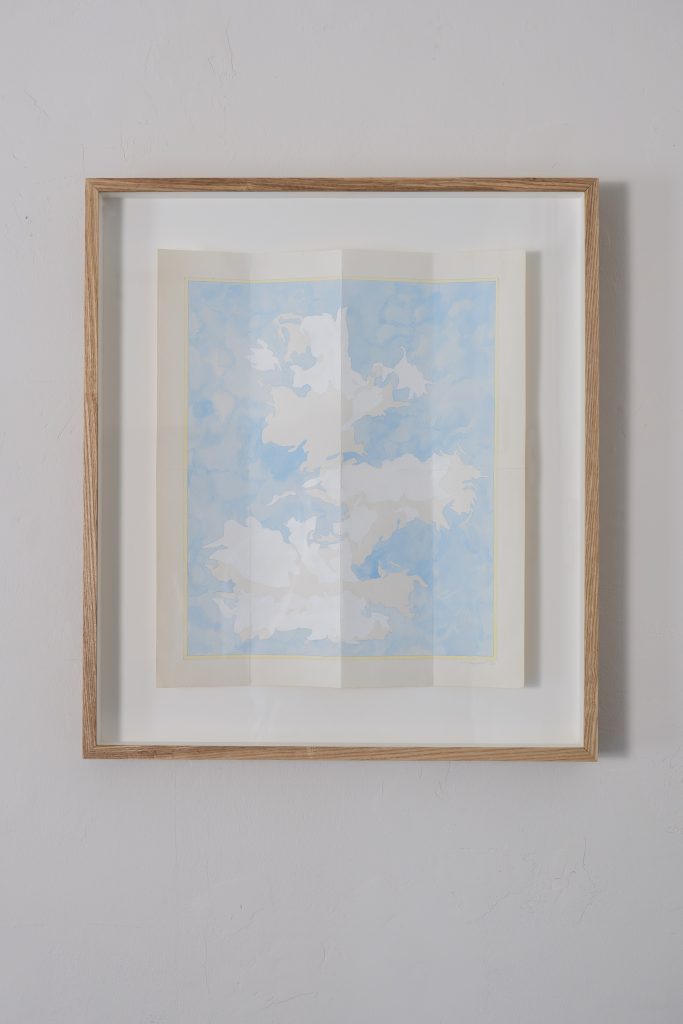
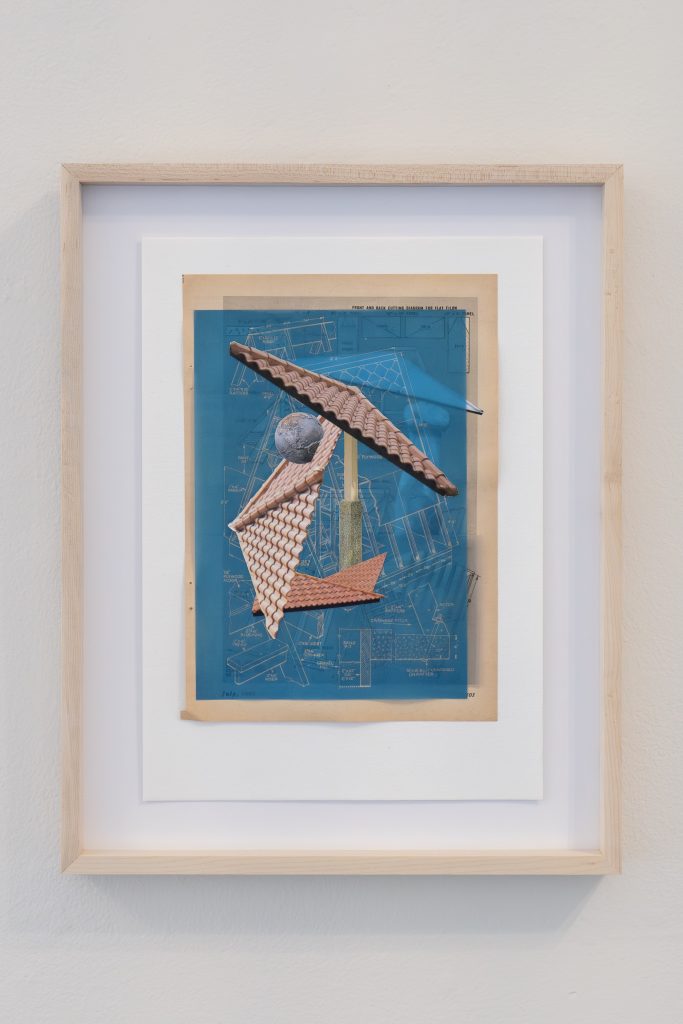
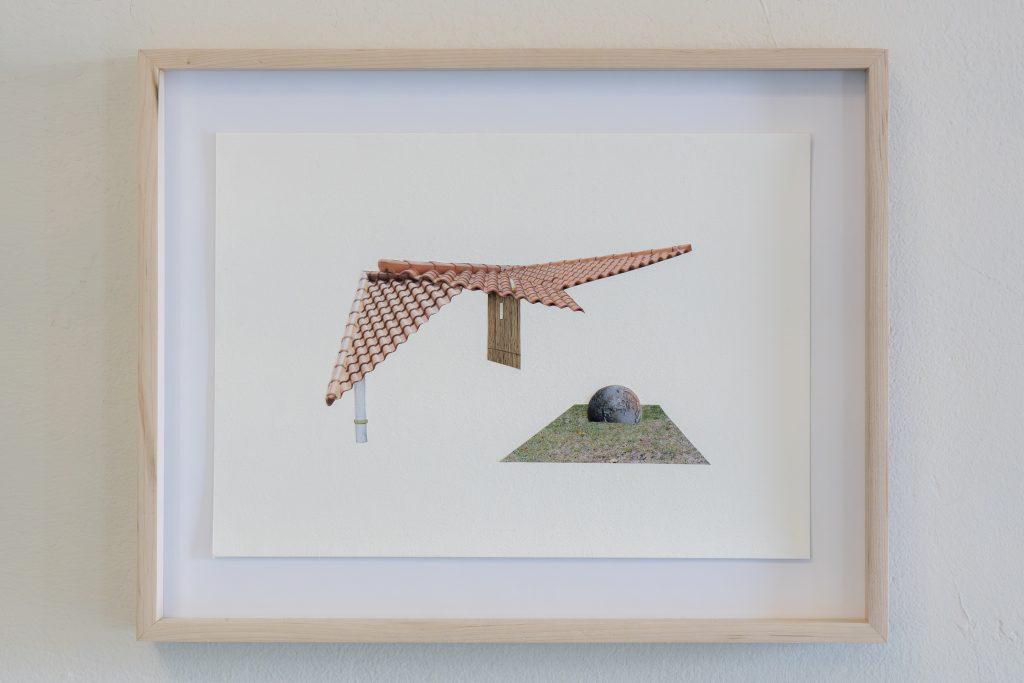
Where Till-Campbell explores the Midwest, Zulkiflee examines place as it relates to Malay identity and relocation, drawing from historical events like the Java Village in the 1893 World Columbian Exposition in Chicago. Through cut paper collages, Zulkiflee examines and deconstructs the pavilion-shelter, a modern structure with similar architectural features to traditional structures that were transported to Chicago for use at Java Village. Today, the pavilion-shelter is commonly found in public spaces in Singapore. Intended as shared spaces for communities to access and share, they are frequently occupied by male youth as a place to hang out together.
Alongside the pavilion, Zulkiflee invokes the concept of ‘world’, a confabulatory framework devised by the artist and derived from a derogatory, Singaporean-Malay slang used in bilingual speech of World English variety. To ‘world,’ as Zulkiflee calls it into use, can involve telling a tall tale or taking chances in the confidence of one’s own storytelling to build a narrative that’s larger than life. ‘Worlding’, in Zulkiflee’s work, then becomes the process of constructing hypothetical structures through collage with pieces of the pavilion that pay little attention to architectural function or common sense. Through deconstructing aspects of the pavilion, including its tiled roof, concrete support beam, and the metal frame of benches, Zulkiflee creates spaces that disregard assumptions of utility and turn instead to the possibilities of ‘worlding.’ Pieces of roof balance haphazardly on a single concrete support. A portion of sidewalk hovers on the white space of paper, its purpose as a throughway no longer relevant. In The World Rolled off His Tongue—one of six collages making up a larger piece—two pieces of pavilion roof appear to be held up by nothing more than one slim structural support, an arrangement that by all appearances would not make functional sense if actually built. By cutting up and breaking apart digital photographs of the pavilion and reassembling fragments in the spirit of ‘worlding,’ Zulkiflee considers the way “function” is valued as it relates to this structure as a place for gatherings; a failure to align with capitalist global perceptions of productivity or industry.
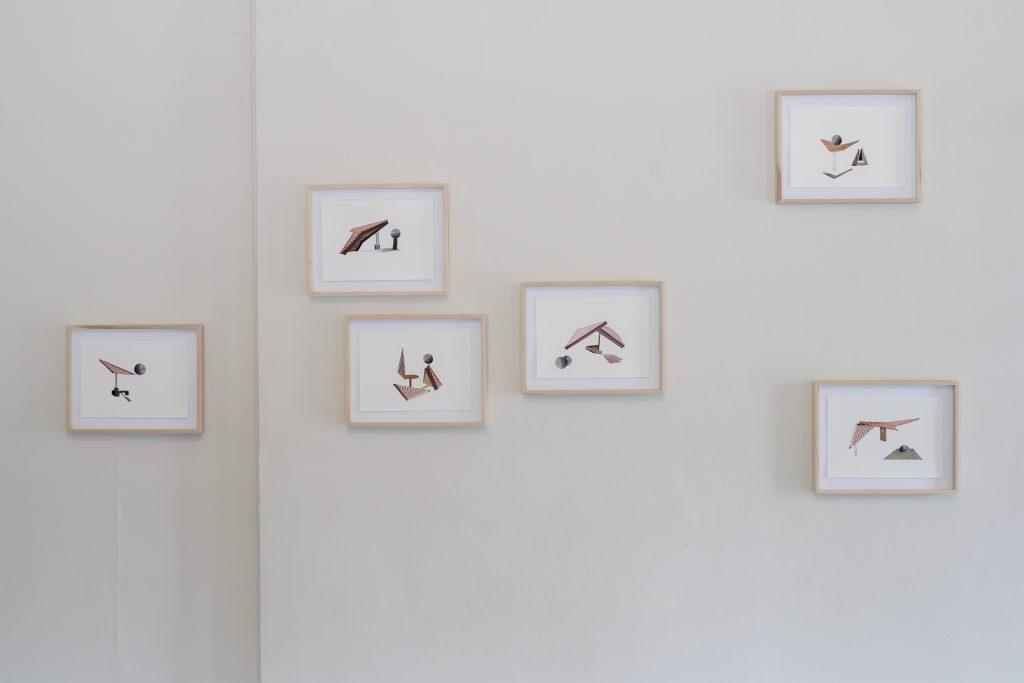
Although both artists consider concepts of place, Till-Campbell’s works focus on the breaking down of its visual cues while Zulkiflee’s collages rebuild them, fragmenting the pavilion structure and crafting the pieces into new spacial possibilities. Where Till-Campbell’s shapes and pieces explore ideas of representation, Zulkiflee’s pavilion fragments engage in rebuilding. In each collage, at least one globe resides at an impractical, uncertain place: balanced on a piece of roof or sinking, somehow, into a plane of grass. These collages champion possibility and improvisation, theorizing on what it might mean to ‘world’ with pieces of a concept’s very architectural framework. When the structure is disrupted, fragmented, and rebuilt to introduce new possibilities and invoke something unconventional, familiar connections with its title and assumed function are questioned altogether.
In the exchange between these works is an openness that serves as an entryway for the viewer. The works create generative cognitive space for us to think about our own ideas of place. Puzzle pieces through which the artists have put together their own explorations are provided for us to consider: roof, concrete beams, a brick, a balancing globe, a Julie Blackmon photograph as part of a sculptural piece. As viewers, we might consider using these elements as prompts for our own investigations or we may find other items or concepts that form our perception and experiences of our relationship between place and identity. Also valuable are instances in which these propositions gain a tactile or historied dimension. Till-Campbell’s Map of the clouds just now and Zulkiflee’s Building a World Manual (Double Consciousness) both draw on concepts of artifact and use–Map of the clouds with its worn folded lines enigmatic of an old pocket map and Building a World Manual (Double Consciousness) as a collage layered with architectural blueprint plans. These pieces move from a space of abstraction to one with narrative implications, a transition which welcomes the viewer to picture processes such as interaction, reference, and utility.
In certain places, considering the implications of connections between title, which brings with it an assumed identity, and place is made possible through the act of imagination: to balance a globe, to draw a map of the clouds, to guess at a purpose for architectural plans. The artists come to this act motivated by the knowledge that ideas of place are incomplete and require upending and experimentation. It is an invitation to actively question and reimagine; to engage in a considered sense of play. Here at Comfort Station, this small structure on its own shape of earth within the larger grid of the city and the Midwest, experimentation through care and observation is encouraged.
certain places was on view at Comfort Station in Chicago from June 1 through June 30, 2024.
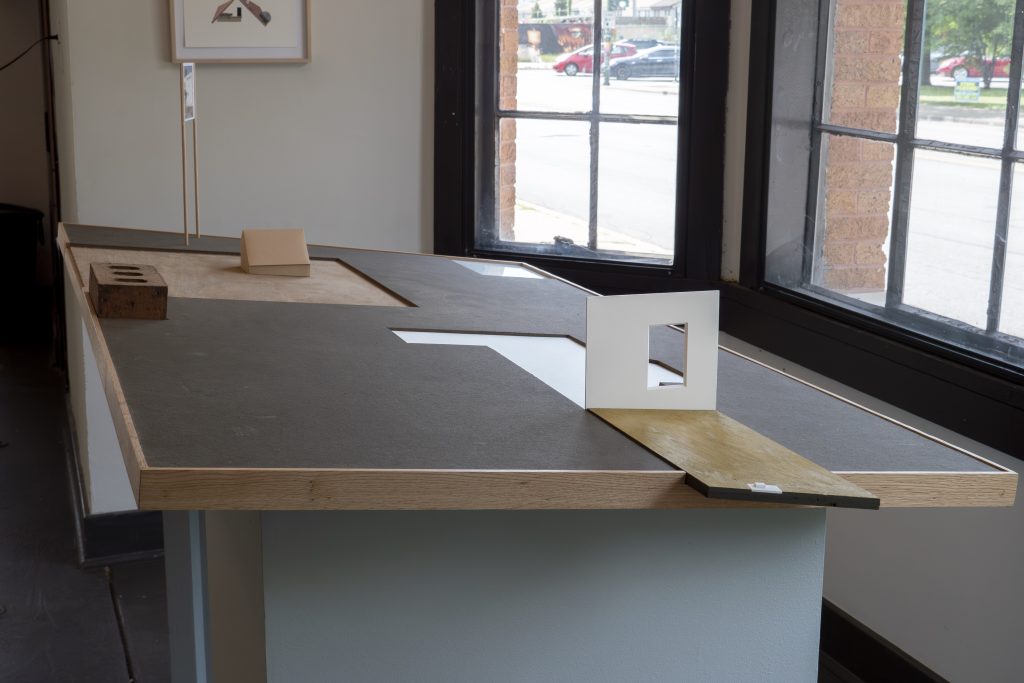
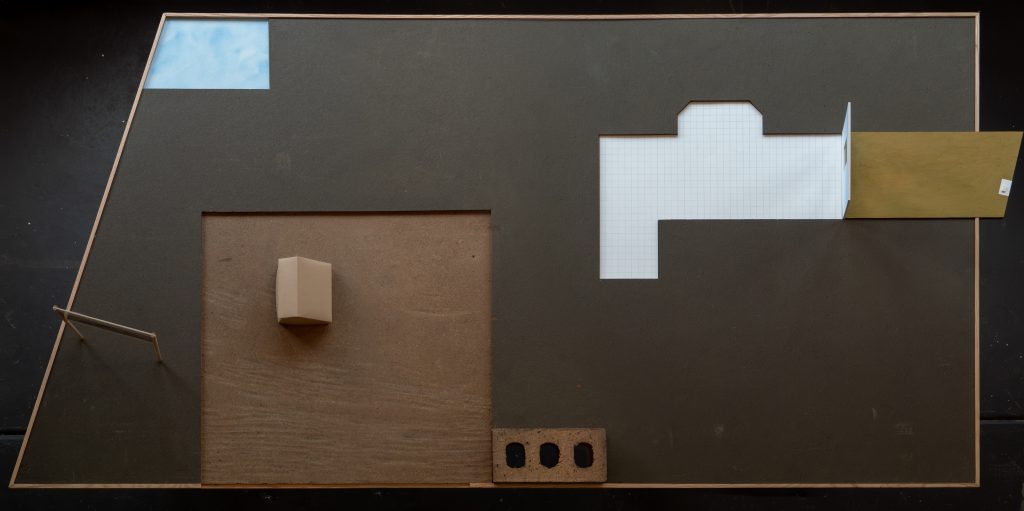
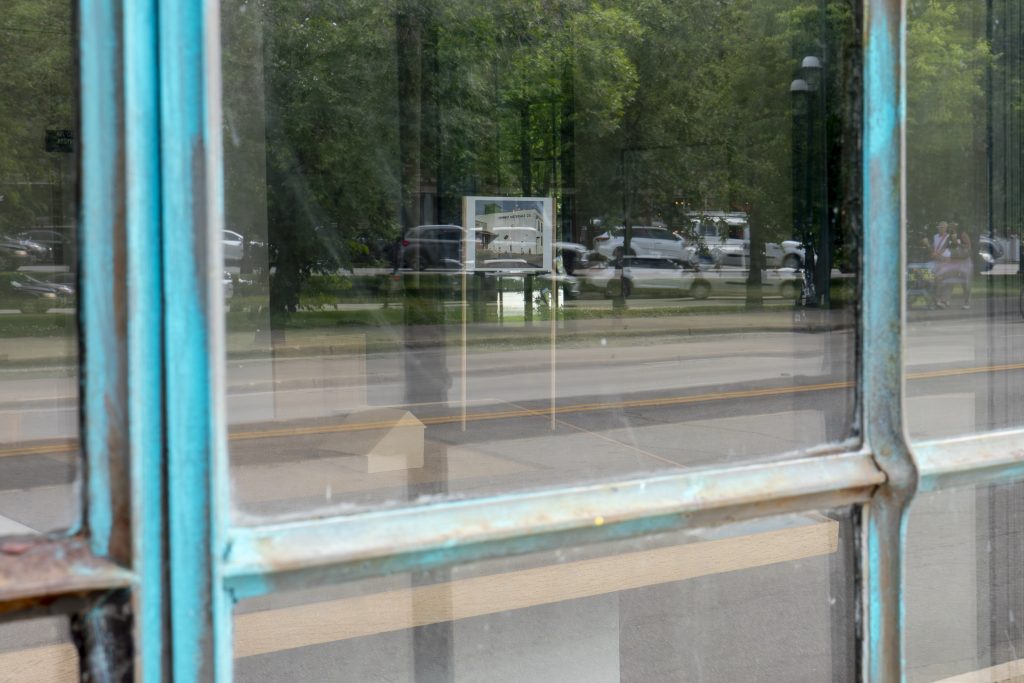
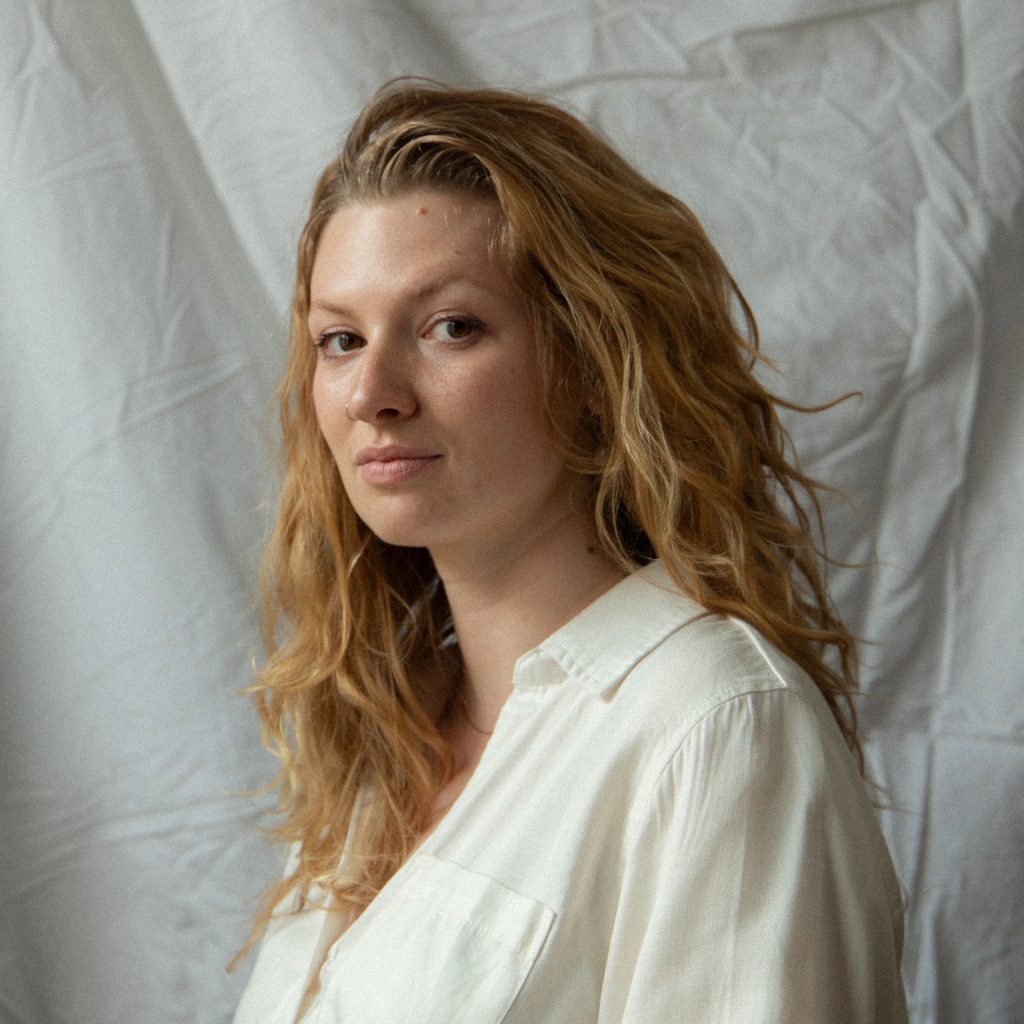
About the author: Josepha Natzke is a Chicago-based writer and artist. Her essays, poetry, and drawings explore themes of place, bodies, and environment. Raised in the Pacific Northwest and a current Midwest resident, her work also seeks to understand communities’ relationship to place and the frameworks that inform their interactions with land and with culture. Josepha’s writing has appeared in publications including Sixty Inches from Center, Newcity, and Mockingbird.
